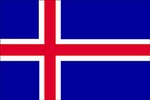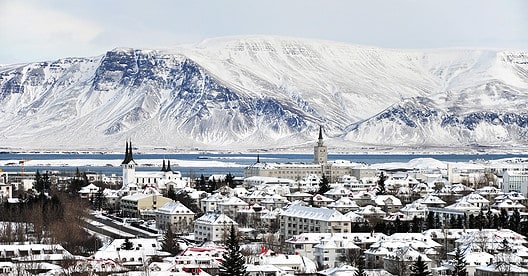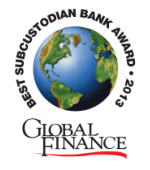Includes Iceland real Gross Domestic Product growth rate, with latest forecasts and historical data, GDP per capita, GDP composition and breakdown by sector.
Browse additional economic indicators and data sets, selected by Global Finance editors, to learn more about Iceland economic outlook, debt to GDP ratio, international trade performance and population trends. Rankings of Iceland best banks and safest banks are also available.
Basic Information
Government Type: Unitary parliamentary republic
Capital City: Reykjavik
GDP & Economic Information
Macroeconomy & Sovereign Data
| Central Bank |
Central Bank of Iceland |
|---|---|
| Currency |
Icelandic kronur (ISK) |
| International Reserves |
USD 6.3 billion (2018) International Monetary Fund (IMF), data retrieved October 2019 |
| Gross Domestic Product – GDP |
USD 25.9 billion (2018, estimate) |
| GDP (Purchasing Power Parity) |
Intl$ 19.5 billion (2018, estimate) |
GDP Data
| Real GDP growth |
2007 9.4% 2008 2% 2009 -6.8% 2010 -3.4% 2011 -3.4% 2012 -3.4% 2013 -3.4% 2014. 2.1% 2015. 4.7% 2016. 6.6% 2017 4.6% 2018* 4.6% *Estimate |
|---|---|
| GDP per capita – current prices |
USD 74,278.2 (2018, estimate) |
| GDP per capita – PPP |
Intl$ 55,917.3 (2018, estimate) |
| GDP (PPP) – share of world total |
1980 0.02% 1990 0.02% 2000 0.02% 2010 0.01% 2019* 0.01% *Estimate |
| GDP – composition by sector |
agriculture: 5.8% industry: 19.7% services: 74.6% (2017 estimate) |
| Gross domestic expenditure on R&D; (% of GDP) |
2.1% (2017) OECD, data retrieved October 2019 |
| Inflation |
2015 1.6% 2016 1.7% 2017 1.8% 2018* 2.7% 2019* 2.8% *Estimate |
Iceland
Inflation & Debt
| Inflation |
2015 1.6% 2016 1.7% 2017 1.8% 2018* 2.7% 2019* 2.8% *Estimate |
|---|---|
| Government Bond Ratings |
Standard & Poor’s: A Moody’s: A3 Standard & Poor’s / Moody’s |
| Unemployment rate |
2015 4% 2016 3% 2017 2.8% 2018* 2.7% 2019* 3.3% *Estimate |
| Household saving rates | N/A |
| Public debt (General government gross debt as a % of GDP) |
2013 84.8% 2014 82.5% 2015 67.6% 2016* 55.1% 2017* 51.8% *Estimate |
| Public deficit (General government net lending/borrowing as a % of GDP) |
2015 -0.8% 2016 12.4% 2017 0.5% 2018* 1.1% 2019* -0.7% *Estimate |
| Market value of publicly traded shares | N/A |
| Largest Companies | N/A |
Import/Export
| Exports as percent of GDP (Exports of goods and services) |
47.2% (2018) |
|---|---|
| Shares in world total merchandising export |
0.03% (2018) |
| Shares in world total commercial services export |
0.11% (2018) |
| Total exports |
USD 12.2 billion (2018 estimate) |
| Export commodities |
Fish and fish products (42%), aluminum (38%), agricultural products, medicinal and medical products, ferro-silicon (2015) |
| Total imports |
USD 11.4 billion (2018 estimate) |
| Import commodities |
Machinery and equipment, petroleum products, foodstuffs, textiles |
| Exports – major partners |
Netherlands 25.5%, Spain 13.6%, UK 9.4%, Germany 7.6%, US 7%, France 6.3%, Norway 4.9% |
| Imports – major partners |
Germany 10.7%, Norway 9.2%, China 7%, Netherlands 6.7%, US 6.4%, Denmark 6.2%, UK 5.7%, Sweden 4.1% |
Competitiveness & Trade
| Current account balance |
USD 0.7 billion (2018 estimate) |
|---|---|
| Current account balance by percentage of GDP |
2.8% (2018 estimate) |
| FDI inflows |
2016 USD -427 million 2017 USD -41 million 2018 USD -336 million |
| FDI Outflows |
2016 USD -1,147 million 2017 USD -208 million 2018 USD 138 million |
| Value of cross-border M&A, by country of purchaser |
N/A United Nations Conference on Trade and Development (UNCTAD) – World Investment Report |
| Cross-border M&A deals worth over $3 billion completed in 2014 | N/A |
| Cross-border M&A deals worth over $3 billion completed in 2015 | N/A |
| Best countries for doing business |
Economies are ranked on their ease of doing business. A high ease of doing business ranking means the regulatory environment is more conducive to the starting and operation of a local firm. Overall ranking: 26 out of 190 countries Starting a Business: 64 out of 190 countries Dealing with Construction Permits: 72 out of 190 countries Getting Electricity: 16 out of 190 countries Registering Property: 16 out of 190 countries Getting Credit: 94 out of 190 countries Protecting Minority Investors: 28 out of 190 countries Paying Taxes: 42 out of 190 countries Trading across Borders: 53 out of 190 countries Enforcing Contracts: 33 out of 190 countries Resolving Insolvency: 12 out of 190 countries World Bank – Doing Business 2019 |
| Global competitiveness ranking |
26 out of 141 countries (2019) |
| Index of Economic Freedom |
Ranking: 11 / Score: 77.1 (Mostly free) (2019) (100=totally free 0=totally repressed) |
Population & Geographic Data
| Time Zone | UTC 0 |
|---|---|
| Total Area |
103,000 sq km |
| Total Population |
1990 0.25 Million 2000 0.28 Million 2010 0.32 Million 2015 0.33 Million 2020* 0.36 Million |
| Urban population as % of total population |
1960 80.3% 1980 88.3% 2000 92.4% 2018 93.8% |
| Population median age |
36.7 years |
| Population growth rate |
1.08% (2018 estimate) |
| Life expectancy |
83.1 years (2018 estimate) |
| % of population living on less than $3.10 a day |
0% (last available estimate, 2014) |
| Inequality of wealth distribution (Gini index) |
27.8 (last available estimate, 2014) (0=perfect equality, 100=absolute inequality) |
| Freedom House rating |
Political Rights: 1 Civil Liberties: 1 (2019) (1 represents the most free, 7 the least free rating) |
| Total telephone subscribers as % of population |
Fixed: 40.6% Mobile: 126.1% (2018) (fixed-telephone subscribers and mobile-cellular subscribers) |
| Internet users as % of total population |
99.01% (2018) |
Language & Religon
| Languages |
Icelandic, English, Nordic languages, German |
|---|---|
| Literacy | N/A |
| Religions |
Evangelical Lutheran Church of Iceland (official) 67.2%, Roman Catholic 3.9%, Reykjavik Free Church 2.8%, Hafnarfjordur Free Church 2%, Asatru Association 1.2%, The Independent Congregation .9%, other religions 4% (includes Zuist and Pentecostal), none 6. |
World Rankings
| Population | 0.36 M |
|---|---|
| Mercer Cost of living index | N/A |
| C02 Emissions per capita |
6.06 (2014) |
Global Finance Rankings & Awards: Iceland
Global Finance Magazine holds several conferences and awards ceremonies throughout the year to recognize the winning financial institutions and companies in a host of categories including World’s Best Trade Finance Banks, World's Biggest Banks, World's Safest Banks, World's Best Developed & Emerging Markets Banks, World's Best Internet Banks, and World’s Best Investment Banks.
Data Sources:
IMF World Economic Outlook
UN World Population Prospects
World Inequality Report
S&P Global Ratings
Moody’s
Fitch Ratings
IMF Direction of Trade Statistics (DOTS)
UN Conference on Trade and Development (UNCTAD)
CIA The World Factbook
World Bank’s World Integrated Trade Solution
Forbes Global 2000





